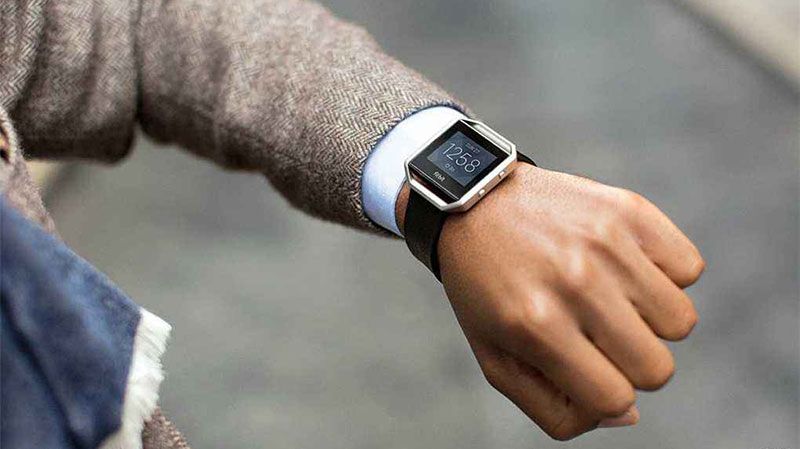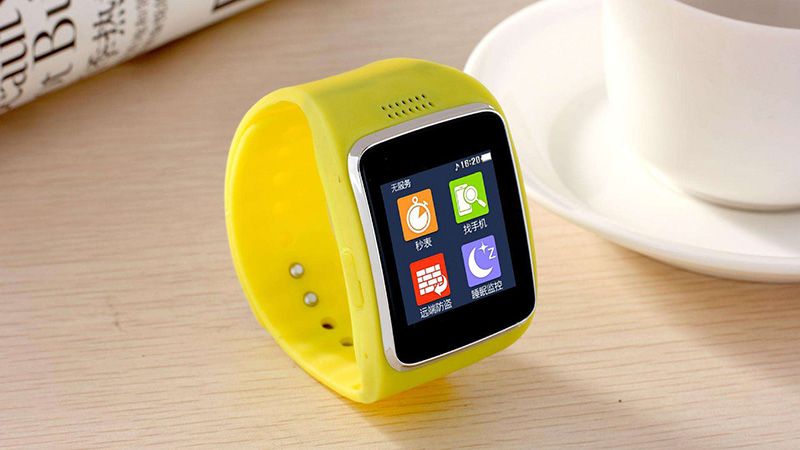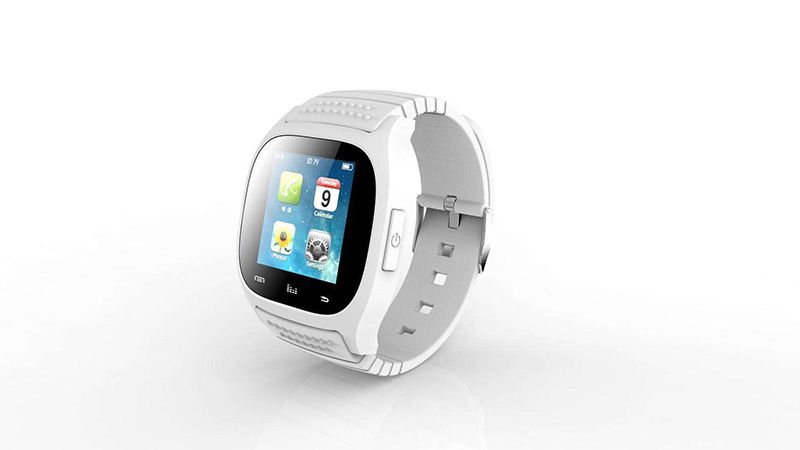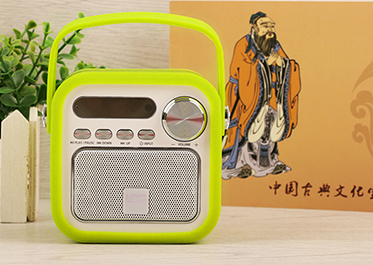Smart watch solution development
Traditional watches were mainly focused on timekeeping at first, and then gradually evolved into decoration more than timekeeping; smart watches can realize a large number of additional functions in addition to timekeeping. Users can view notification information, answer calls, and send and receive text messages more conveniently. At the same time, record and track various health indicators, so that you can check your health status at any time.
Obviously, when we buy a smart watch, we don’t just use it to tell the time, because if this is the only need, a traditional mechanical watch would be a better choice. Therefore, we need to be clear about what functions we want it to achieve. As far as smart watch products currently on the market are concerned, smart watches are usually divided into two categories: health data monitoring and all-round smart experience. Health data monitoring usually has monitoring functions such as heart rate, step counting and calorie consumption. When choosing this type of product, you must clearly understand what you need and what it can bring us.
1. Types of smart watch solutions
1. Adult smart watch solution
It can synchronize mobile phone calls, send and receive text messages, sleep monitoring, heart rate monitoring, sedentary reminder, running step recording, remote photography, music playback, video recording, compass and other functions via Bluetooth synchronization. It is deeply loved by modern business and fashionistas.
2. Children’s positioning smart watch solution
Multiple positioning, two-way calling, SOS, remote monitoring, intelligent anti-lost, historical track, electronic fence, pedometer, love rewards and other functions ensure the safety of children and reassure parents.
3. Smart watch solution for the elderly
Ultra-accurate GPS positioning, family calls, emergency calls, heart rate monitoring, sedentary reminders, medication reminders and many other functions specially customized for the elderly provide a protective umbrella for the elderly when traveling and put their children at ease.
2. Smart watch operating system
From the perspective of operating systems, the smart watch operating systems currently on the market can be divided into mainstream Android and systems independently developed by brand manufacturers. The following are the operating systems of mainstream brands of watches we have counted:
In terms of operating system classification, mainly Watch OS, Versa 2, Tizen and Android Wear. As the sales of Apple Watch are far ahead, Watch OS has become the smart watch operating system with the highest market share in the world. In terms of sales volume, Watch OS, Versa 2, Tizen and Android Wear are the mainstream operating systems.
The Android operating system is gradually losing its dominance, and the watch operating system is contending. The smart watch engine is mainly composed of Apple's watchOS, Fitbit OS, Android and Samsung Tizen OS. The Android operating system has lost its previous dominance in smartphones, partly due to Google’s reduced focus on Android wear OS in the past few years, the reduction in UI intuitiveness, and selective cooperation with smart watch OEMs.

3. Challenges of smart watch solutions
Problems such as lack of innovation in functions, poor battery life, unsightly design, and immature operating system were the main core pain points criticized by consumers when smart watches were first launched. At the same time, because smart watches relied on mobile phones in their early days, functional innovation It highly overlaps with smartphones and is reduced to an accessory for smartphones in most scenarios.
1. Insufficient battery life and frequent charging
Smart watches generally need to be charged once every 1-2 days on average. It is limited by its shape and weight and cannot be equipped with a larger-capacity battery. At the same time, smart watches also integrate multiple functions such as heart rate monitoring, sending and receiving text messages/emails, and caller ID, which impose more stringent requirements on power consumption.
Currently, smart watch manufacturers are also looking for ways to reduce power consumption and extend battery life. In order to reduce power consumption as much as possible, this series of products implements a wrist-raising activation function through a built-in gravity sensor. In non-power-saving mode, the digital clock can be displayed as long as you raise your wrist. However, sometimes this function is not sensitive, making it inconvenient to tell the time. With the development and evolution of smart watches, terminal manufacturers are gradually optimizing battery life and other issues through software, hardware and other methods. At the same time, in addition to batteries, fast charging technology and wireless charging technology have developed rapidly in recent years. Both in terms of battery capacity and charging speed, they are expected to solve the pain point of insufficient smart watch battery life.
2. Wireless connection method
In the early days of the development of smart watches, smart watches, like bracelets, were often just accessory devices to mobile phones. They were connected to mobile phones through Bluetooth and Wi-Fi to realize functions such as step counting, making phone calls, and reading text messages. Smart watches are limited by the requirements of being small, thin, and lightweight. Traditional SIM cards cannot be implanted in watches. In the pursuit of more durable and waterproof mobile phones, more entry points are also required to be removed.
With the development of SIM cards, the emergence of e-SIM cards has solved the pain points of smart watches relying on smartphones. As the three major domestic operators have successively launched eSIM services, the entire smartwatch market segment is undergoing a stage of development of cellular functions, which can make it a truly independent wearable device.
3. Lack of innovation in functions and blurred boundaries with mobile phone positioning
The positioning of smart watches overlaps with that of smartphones, the lack of innovative functions, the screen display area is much smaller than that of mobile phones, inaccurate touch control, and reliance on mobile phones for network connections. These problems have become bottlenecks for the rapid growth of smart watches in the early stages of development. Regarding positioning, brand manufacturers are constantly searching and exploring to find a suitable positioning for smart watches; at present, watches are mainly focused on sports and health, and children's watches have also become one of the core needs.
Compared with smartphones, the biggest difference between smart watches and mobile phones is that smart watches are close to human skin. Sleep monitoring, calories burned, human heart rate, continuous monitoring of ambulatory blood pressure, ECG, blood oxygen, skin electricity and other data are all things that wearable devices can do but mobile phones cannot. In addition to distinguishing mobile phones, smart watches can also replace the functions of mobile phones to a certain extent and free up hands.

4. Application of smart watch solution
Compared with traditional watches, smart watches are more practical and have usage scenarios such as health, GSP positioning for help, and sports. Overall, the functions of smart watches are practical, and the functions of each brand are relatively similar. According to our statistics, mainstream smart watches can be divided into health, sports, and children, and each application scenario has its own leader.
1. Sports applications of smart watches
Sports have become the mainstream usage scenario, and the mainstream people who exercise are the mainstream people who use electronic devices. After smart watches are implanted into cellular networks, the original pain point of relying on mobile phones gradually disappears. In light-packing scenarios such as swimming, fitness, and running, watches have become the best electronic device to replace mobile phones. In daily life, after smart watches achieve independence, they will greatly reduce users' dependence on mobile phones. The current mainstream demand for fitness and sports is from those aged between 26 and 35. People in this age group are the mainstream consumers of electronic equipment.
2. Health applications of smart watches
Health will become one of the important scenarios for the future development of smart watches. From the perspective of the physical examination industry, we can conclude that health has become the main demand now, and this demand is growing year by year. The market size of China's physical examination industry has been steadily increasing year by year. As more and more smart watches begin to be equipped with ECG functions, the extension of smart watches into health scenarios will bring about the generation of new needs and changes in usage habits for users, and will establish higher technologies for manufacturers. barriers and strengthen competitive advantages.
3. Children’s applications of smart watches
Child safety is the primary focus of parents. The problem of missing children in China has become serious since the 1980s. By the early 1990s, the number of missing children reached the highest level in history. Child safety has always been a major core need. From a technical point of view, current indoor positioning technologies include RFID, Wifi, UWB, infrared and ultrasonic, ZigBee, base station positioning, inertial navigation positioning and other different technical directions. Some of them are relatively complete, and some indoor positioning technologies are far away. Commercial use is still some way off. At present, Apple's new iPhone 11 has launched UWB indoor positioning technology. The positioning error is smaller than Bluetooth and Wi-Fi, and can achieve "centimeter-level" positioning effects. Some children's watches use triangulation positioning technology, enhanced WiFi fingerprint model technology, geomagnetic technology, Bluetooth technology, etc., combined with the indoor map service provided by Baidu Maps. The indoor positioning accuracy is inferior to the centimeter-level accuracy of iPhone UWB indoor positioning. The indoor positioning accuracy It can reach between 5-15 meters.
In addition, children's watches have effectively replaced mobile phones, enriching the communication methods between parents and children. Parents can directly contact children through video calls, voice calls and other functions, and avoid the additional functions of smartphones from interfering with children's learning.

5. Structural components of smart watches
Smart watches are rich in functions and have a large number of internal components integrated into them. Unlike traditional electronic watches, the various electronic components integrated into smart watches bring them rich functions. The components of a smart watch can be divided into watch body and strap; more specifically, the components of a watch can be divided into sensors, chips, batteries, touch screens, display screens, watch bodies and straps.
The small size of smart watches integrates a large number of ICs, such as radio frequency, Bluetooth, WiFi, power management chips, etc., as well as sensors, accelerometers and other components. The manufacturers of the components come from well-known manufacturers; with the integration of smart watches, The degree is getting higher and higher, the functions are gradually improving, the demand for the supply chain is gradually expanding, and a complete industrial chain and value chain will be formed in the future.
6. Development Prospects of Smart Watches
Smart watches equipped with independent 4G will gradually develop as operators advance their eSim business. 4G not only complements the call scenarios of smart watches, but also provides instant data transmission convenience for ecological services based on sports, health, life and other scenarios. Smart watches equipped with voice assistants, combined with smart wireless headset products, will become a new terminal device combination in scenarios that require hands-free use. The size of the TWS market is rising rapidly. The "natural match" of TWS earphones + smart watches is also expected to take over from mobile phones in mobile scenarios to handle tasks such as making calls, paying, and viewing information. It is especially suitable for the segmented scenario of going out for sports.
The combination of watch + earphones can bring users a quick operation and portable experience, especially in scenarios such as cycling and running where it is inconvenient to use mobile phones. In addition, the watch and earphones are linked to provide diversified and fragmented networking methods, breaking the mobile phone Monopolizing all Internet time can alleviate the digital anxiety caused by mobile phones to a certain extent. With the popularization of new mobile communication technologies such as eSIM number one multi-terminal and future 5G commercialization, the cost of independent communication for users on AI wearables has been significantly reduced. AI wearables, especially the wrist + ear combination of smart watches and smart headphones, will truly replace smartphones and become one of the most important Internet terminals in people's lives.
Proposal recommendation
- TOP



